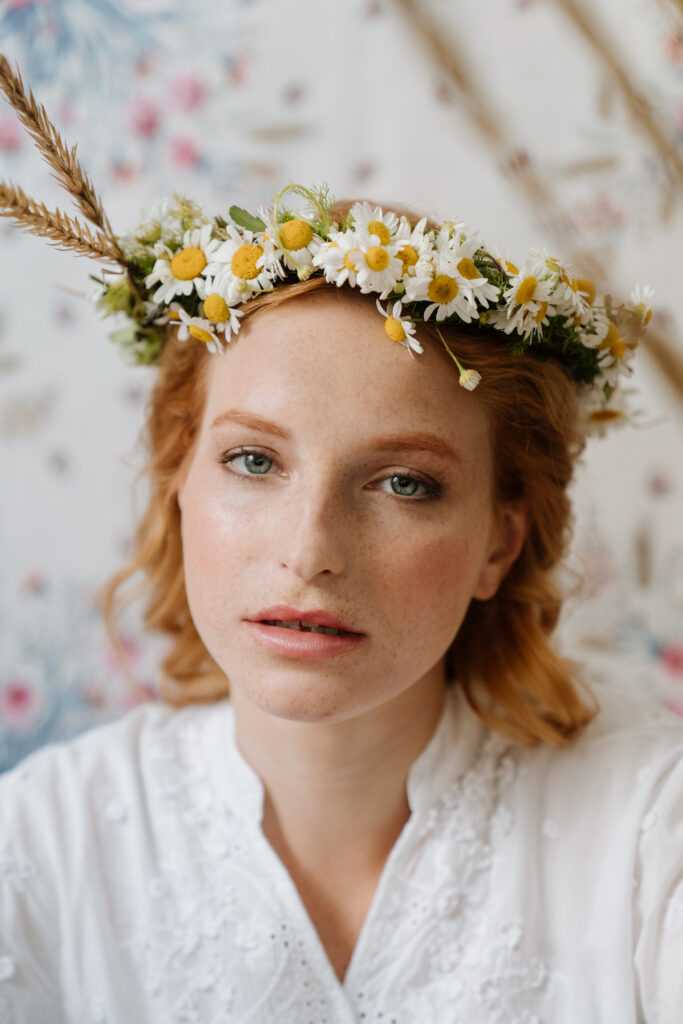The most important moment in the bride and groom’s feast was the ritual of the nuptials. Traditionally, these took place after the wedding – that is, the first night spent together by the newlyweds. During this ritual, the bride was seated on a bowl. This vessel played a very important role in the traditional wedding, being a symbol of fertility and birth. The wedding ceremony was the only time anyone was allowed to sit on the bowl. As the place where the sourdough was kept and the bread rose, it was treated with respect. Sitting the bride and groom on the kneading-trough was supposed to ensure the bride and groom an abundance of bread, numerous offspring and wealth. The presence of this vessel, used by the woman, also signified the assumption of a new role by the young woman, who was henceforth to act as the hostess in the new family1. At the time of the bride’s enchantment, the garland, which was a symbol of virginity, was removed and a cap was put on, as a sign of a married woman. This was a ritual moment to which only women had access. In the oldest times, it took place in a chamber, without access to men and by candlelight. During the entombment, “Chmiela” was sung, a song that is present under different versions in all regions of Poland and probably still dates back to pagan times.
„Żebyś ty, chmielu, po tyczkach nie liaz,
tobyś nie robiuł z panienek niewiast.
Oj, chieliu, oj, nieboże, wlaz na tyczki, zleźć nie może,
oj chmieliu niboże.”
After the wedding banquet, all the guests were allowed to dance with the bride one last time without asking her husband’s permission, but the dance had to be paid for. This moment was called “collecting for the headpiece”. Again, the most important chant here was, one by one all the guests were called up and encouraged to dance and pay the bride.
„A czy dacie czy nie dacie, jakże wy jej powiadacie,
Trzeba jej dać, nie żałować, na czepyczek podarować”
„Dajcie, dajcie, bo wy macie, wy na handlu zarabiacie,
dajcie dajcie na bursztyny, żeby miała ładne syny,
dajcie, dajcie, na niecułki, żeby miała ładne córki.”
„Wszystkie druhny wlazły na piec, bo sie boją dać na czepiec.
Wszystkie druhny, złaźta z pieca, podarujta coś do czepca.”
This game even lasted for more than an hour. At the end of the ceremony, the wedding rod was burned (so that no one would carry it away) and the korowaj was divided, a piece of which was given to each of the wedding guests. The best man’s job was to cut the korowaj, and the hostess distributed it to everyone in turn. Nowadays, a symbol is present – a remnant of the korowaj in the form of a wedding cake. However, it is the bride and groom who do the cutting, and the groomsmen, best man, marshal or ensign are not present at weddings at all.

